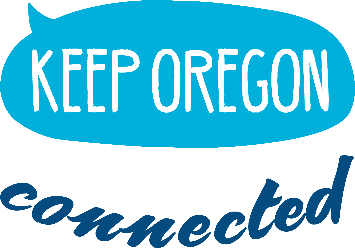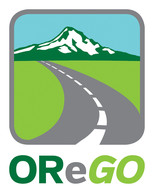ODOT launches campaign to educate Oregonians about transportation funding
Study shows majority don’t understand the funding gap
August 6, 2019
For more information: Michelle Godfrey, (503) 986-3903 or (971) 304-9705
SALEM, Ore. – The Oregon Department of Transportation today launched “Keep Oregon Connected,” a campaign to educate Oregonians about transportation funding and the need for new ways to pay for our roads and bridges.

“Oregon has about 74,000 miles of roads and more than 8,000 bridges, connecting residents and visitors to their favorite places,” said Travis Brouwer, ODOT”s Assistant Director. “However, most people who drive those highways and crossings don’t pause to think about their future maintenance and preservation.”
Oregon raises money to take care of roads and bridges through a gas tax paid at the pump and vehicle fees. With more vehicles getting much better fuel efficiency, many people are paying less in gas taxes while using the road just as much. OReGO was designed to ensure drivers pay for what they use – miles of road – instead of what they consume – gallons of fuel. But most people don’t know a lot about how they pay for roads.
|
With federal grant funding, ODOT designed the Keep Oregon Connected campaign to help Oregonians understand the transportation funding problem, what it means for them and how OReGO works to solve it. ODOT will bring the campaign to community events around the state now through 2020, beginning with the Oregon State Fair in Salem, August 23-25. Follow ODOT on Facebook or on Twitter @OregonDOT to learn about future Keep Oregon Connected events.
Like other states across the country, Oregon charges a gas tax to support the bulk of its transportation projects. The rise of fuel economy has forced all states to consider alternative funding mechanisms such as road usage charging. In 2015, ODOT launched OReGO, the nation’s first road charge program. It is not a new concept in Oregon; the legislature first directed investigation into alternatives to the traditional gas tax in 2001.
Most Oregonians unaware of the funding problem
Yet, years later, many Oregonians still don’t realize that the gas tax is an unsustainable funding source. From January through March 2018, ODOT conducted qualitative online research with a panel of 60 Oregonians in different regions of the state to test potential education campaign messages, concepts, and tools that answer the following questions:
• Why transportation funding matters in Oregonians’ daily lives.
• Why decreasing fuel tax revenue is becoming a problem.
• Why we need to solve it now and how a delay will impact Oregon’s mobility.
At the beginning of the study, 24 percent of participants didn’t know whether there was adequate transportation funding in Oregon. By the end, that number dropped to 8 percent.
“Admittedly I don't think much about where my tax dollars get redirected. I pay taxes associated with gas; but, outside of pricing, I don't give it much consideration. This study helped me consider the greater implications of my road use,” said a participant from Multnomah County.
Participants revealed throughout the study their love for Oregon’s natural areas and outdoor activities, and that they liked data that illustrates the funding problem. ODOT incorporate their feedback in the Keep Oregon Connected education tools featured at MyOReGO.org/Connected.
Why did Oregon create OReGO?

The Oregon Legislature identified the downward trend in transportation funding in 2001 and established Oregon’s Road User Fee Task Force to investigate alternatives to the traditional gas tax. With its direction, ODOT designed and conducted pilot programs in 2007 and 2013 to test a per-mile charging system. The fully operational and voluntary system, named OReGO, launched in 2015 and was the first of its kind in the nation.
By law, Oregon’s Road Usage Charge Program offers motorists choices for the technologies they use to report miles driven as well as how they manage and pay their road use charges. They can obtain services through private sector account managers with market-driven options that are efficient and cost-effective.
|
The future of road charging
Many other states are considering charging by the mile, and members of Congress are exploring taking the approach national. As the leader in road usage charging, Oregon is working to improve the system by exploring new technologies and leading a coalition of western states that is working through how this system could operate across state lines, so out of state travelers would pay their fair share to use Oregon’s roads.
Learn more!
View the Keep Oregon Connected campaign and educational materials at MyOReGO.org/Connected.
OReGO has more than 1,600 vehicles enrolled to date. Learn about OReGO, sign up for the interest list, enroll as a volunteer driver and more at MyOReGO.org.
##ODOT##
|